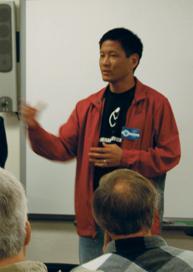This essay first appeared in Cliterati on July 20th; I have modified it slightly for time references and to fit the format of this blog.
All week long I collect sex-work-related news stories for my Saturday “That Was the Week That Was” news columns, and when I prepare the columns each item is filed under a subtitle which refers back to a previous post. But as I explained in “Case Study”, “every once in awhile a story comes along which is so interesting, funny, horrible, odd or whatever, that I like to analyze it at length.” This is one of those stories, and my attention was attracted to it by two things: one, that it was difficult to fit into only one heading; and two, that there’s so much ignorance here one almost has to admire the journalist’s dedication to spreading misinformation. After all, she could have obtained nearly all the information she needed from the two activists she interviewed; instead, she chose to shove their input to corners of the article and instead concentrate on the pronouncements of a clownish cop and a self-important academic (whom I’ve criticized on several occasions for his dopey assumptions). Author Jessica Guynn wastes no time, starting off with monumentally dumb statements from the very beginning:
For years, sex workers have been the entrepreneurs in Silicon Valley that no one talks about. But…the sex industry has been closely linked to boom times in the Bay Area going back to the Gold Rush…
 That it’s the San Francisco Bay Area is neither here nor there; every place there are men with money to spend, there will be sex workers for them to spend it on. Guynn seems to imagine herself an intrepid investigative reporter exposing some hidden scandal; I’m sure she thought it clever to intersperse sentences about the mundane doings of sex workers with those describing recent anti-sex worker pogroms and the overdose death of a Google executive, no doubt hoping the latter two would lend some lurid spice to the rather dry meat of the former. And even when she’s dealing with basic, easily-checked facts, the “pimps and hos” mythology she learned from cops (or television, or other equally-ill-informed sources) seems to interfere with her ability to transcribe them; when the story first appeared she referred to the screening service Preferred 411 as “Preferred911”, and even in the corrected story she portrays it as an escort service directory (with obligatory scare quotes around the perfectly ordinary word “escort”) rather than what it is, a screening service and ad platform. I’m sure activist Siouxsie Q (the first source quoted herein) could’ve thoroughly explained P411 to Guynn, but instead she quickly turns to Scott Cunningham, who might actually be able to turn out good research if he’d consult sex workers instead of proceeding from his own wholly-erroneous preconceptions:
That it’s the San Francisco Bay Area is neither here nor there; every place there are men with money to spend, there will be sex workers for them to spend it on. Guynn seems to imagine herself an intrepid investigative reporter exposing some hidden scandal; I’m sure she thought it clever to intersperse sentences about the mundane doings of sex workers with those describing recent anti-sex worker pogroms and the overdose death of a Google executive, no doubt hoping the latter two would lend some lurid spice to the rather dry meat of the former. And even when she’s dealing with basic, easily-checked facts, the “pimps and hos” mythology she learned from cops (or television, or other equally-ill-informed sources) seems to interfere with her ability to transcribe them; when the story first appeared she referred to the screening service Preferred 411 as “Preferred911”, and even in the corrected story she portrays it as an escort service directory (with obligatory scare quotes around the perfectly ordinary word “escort”) rather than what it is, a screening service and ad platform. I’m sure activist Siouxsie Q (the first source quoted herein) could’ve thoroughly explained P411 to Guynn, but instead she quickly turns to Scott Cunningham, who might actually be able to turn out good research if he’d consult sex workers instead of proceeding from his own wholly-erroneous preconceptions:
Scott Cunningham, an associate professor at Baylor University who studies the economics of prostitution, said the Internet has made the sex trade “extraordinarily efficient,” taking it from the streets and red-light districts to home computers and smartphones.
This is the fundamental flaw in Cunningham’s work: he believes (and has repeatedly stated) that prior to the internet, the majority of whores worked on the street; all of his studies are based on this fallacy. Street workers have never been the majority at any point in history, and under criminalized 20th-century conditions they represented 15% or less of American prostitutes. While it is true that some street workers moved indoors after the advent of the internet, the majority of internet-based escorts are those who used to work in hotels, take out ads in alternative papers or contract with escort services (which largely advertised in phone books). But Cunningham insists on comparing apples to oranges, resulting in strikingly-wrong statements like, “Before the Internet, clients didn’t know where to find the prostitutes and prostitutes did not know where to find the clients.” That’s news to me, and to every other sex worker who did quite well in pre-internet times; I can assure Professor Cunningham that my clients had no trouble whatsoever finding me, and the idea that hookers had trouble finding clients seems to proceed from another ridiculous and false assumption: that clients are only a small subset of all men.
 The belief in a lost era of woebegone streetwalkers crying plaintively in the night for rare and elusive clients (and its counterpart, the creed of the magical whore-multiplying powers of the internet) is also clearly evident in the statements of Sgt. Kyle Oki of the San Jose Police Department Human Trafficking Task Force (formerly known as the San Jose vice squad), who said “prostitutes are gravitating to the Internet because they can charge clients they find there more money for the same sex acts”. This is a fine example of the principle of Garbage In, Garbage Out; Oki proceeds from a set of faulty assumptions, and authoritatively states a conclusion which is literally the exact opposite of the truth: because the internet makes it easier for amateurs to place ads, cheapskates can more easily find cut-rate girls and established ones must either charge less or do more to compete, or else resign themselves to less business. In other words, contrary to Oki’s blather, most prostitutes find that because of the internet they can charge clients less money for the same sex acts. In 2000, the going rate in New Orleans was $300 per hour, above the national average; though it’s still possible for an established lady to get that, $300 buys a lot less than it did 14 years ago. And in some areas (such as Las Vegas and Los Angeles) the bottom has almost dropped out of what was once a very lucrative market.
The belief in a lost era of woebegone streetwalkers crying plaintively in the night for rare and elusive clients (and its counterpart, the creed of the magical whore-multiplying powers of the internet) is also clearly evident in the statements of Sgt. Kyle Oki of the San Jose Police Department Human Trafficking Task Force (formerly known as the San Jose vice squad), who said “prostitutes are gravitating to the Internet because they can charge clients they find there more money for the same sex acts”. This is a fine example of the principle of Garbage In, Garbage Out; Oki proceeds from a set of faulty assumptions, and authoritatively states a conclusion which is literally the exact opposite of the truth: because the internet makes it easier for amateurs to place ads, cheapskates can more easily find cut-rate girls and established ones must either charge less or do more to compete, or else resign themselves to less business. In other words, contrary to Oki’s blather, most prostitutes find that because of the internet they can charge clients less money for the same sex acts. In 2000, the going rate in New Orleans was $300 per hour, above the national average; though it’s still possible for an established lady to get that, $300 buys a lot less than it did 14 years ago. And in some areas (such as Las Vegas and Los Angeles) the bottom has almost dropped out of what was once a very lucrative market.
The rest of the article suffers from the same syndrome that permeates all of prostitution law and much of the public’s conception of sex work: the fallacious belief that sex is different from all other human activity, and sex work different from all other work. Would a reporter find the idea that any other entrepreneur had grossed almost $1 million over several years of brisk business remarkable? Of course not, but somehow it becomes so when the entrepreneur is a sex worker (I also doubt Guynn would use the demeaning word “servicing” to describe the work of a landscaper, chef, masseuse or therapist, but we’ll leave that discussion for another day). And then there’s this line: “One sex worker [said] she uses credit-card payment processor Square to charge clients…” to which any normal person’s response should be, “So what?” How many businesses have you run into lately that don’t take credit cards? Accepting credit cards is not remotely notable, for sex workers or anyone else, and it hasn’t been for at least two decades; the fact that a businesswoman uses a popular payment processor doesn’t make it any more interesting. But that’s par for the course with mainstream articles on sex work; rather than discuss important issues like sex worker rights, police brutality and how “authorities” use the moral panic around “sex trafficking” to justify massive violations of human rights, reporters prefer to present dry-as-dust details that they portray as somehow shocking because the transaction involves sex, then liberally moisten the mixture with lies, myths and sexual fantasies from self-appointed “experts” who know less about sex work than they do about quantum physics.

Professor Scott Cunningham says these indoor sex workers will have to wait at least another century for their clients to find them.
